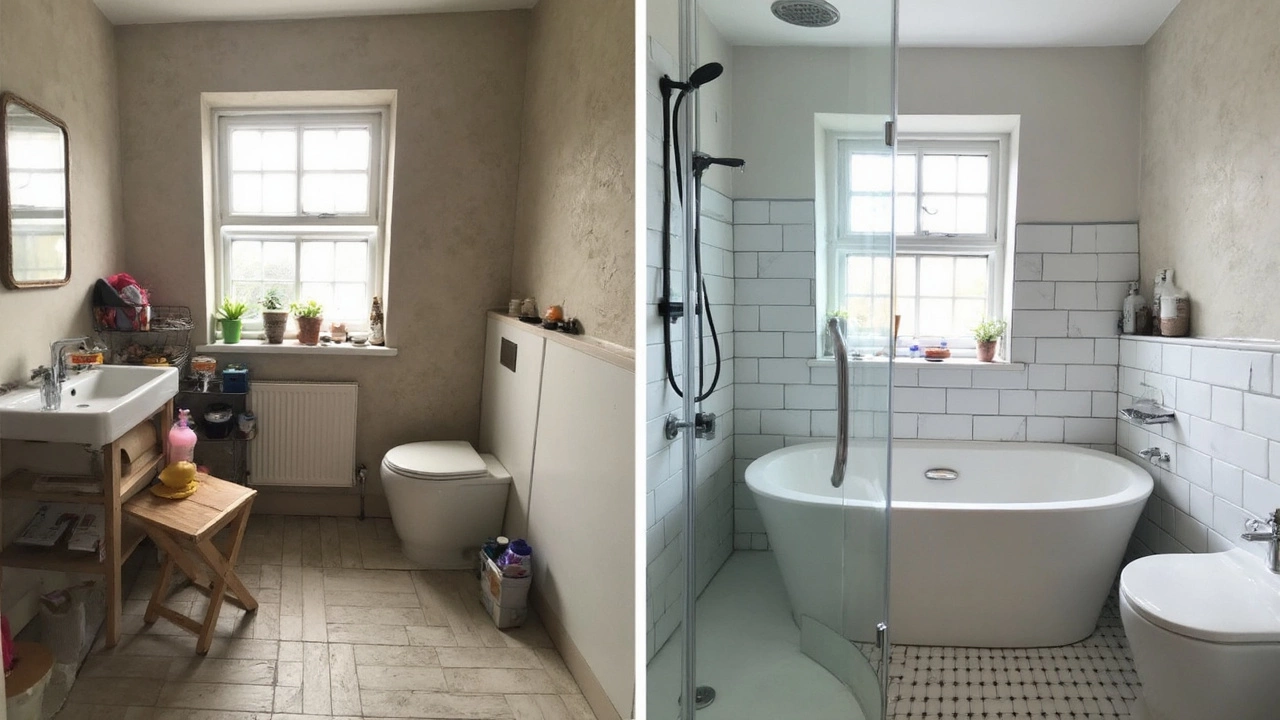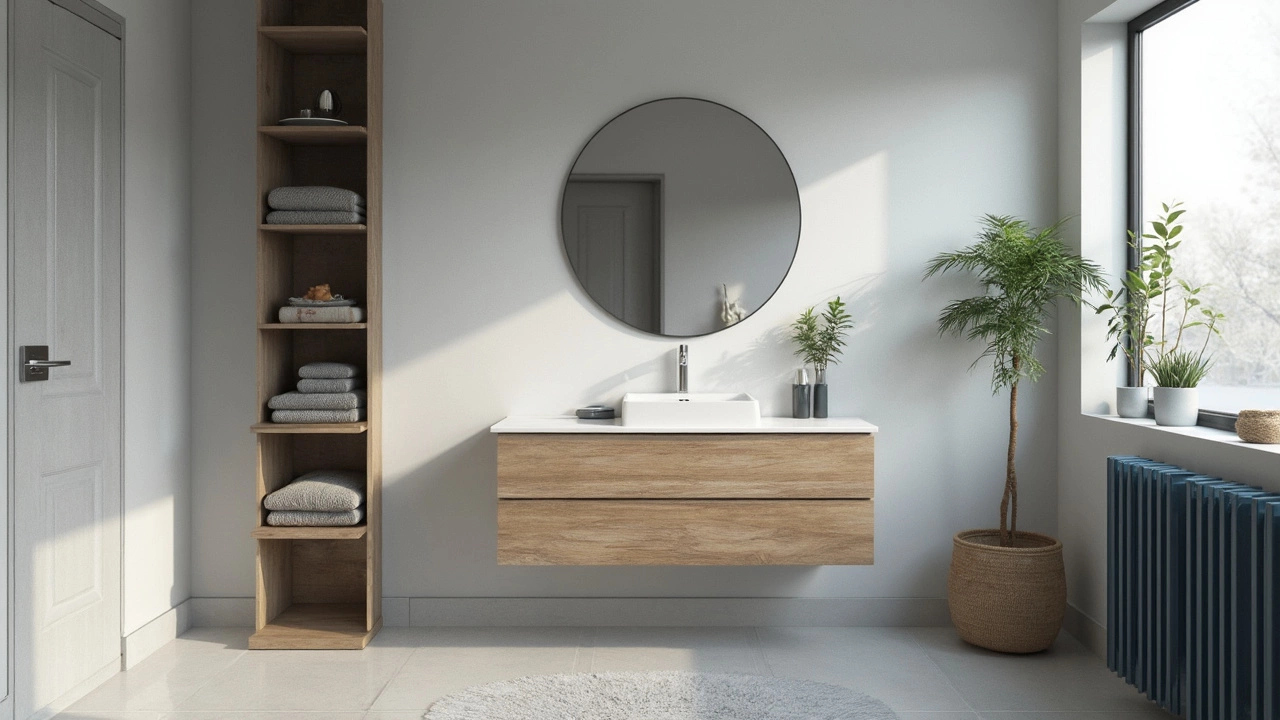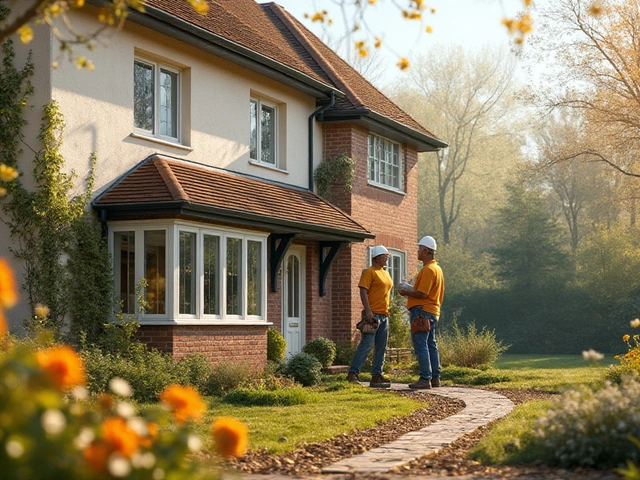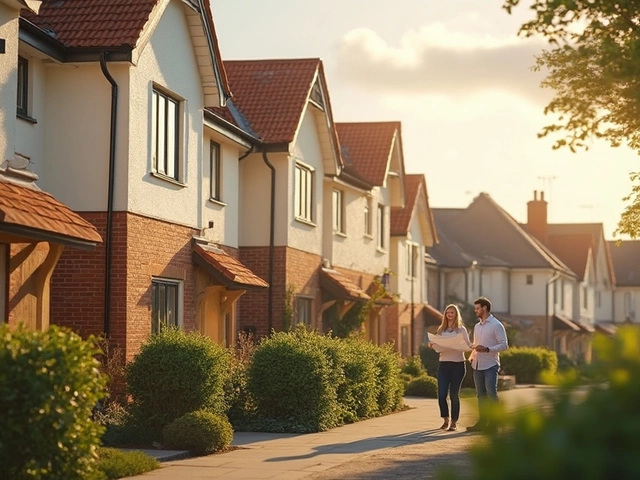Ever walk into a bathroom and just know it’s an upgrade from the usual? There are clear signs when a bathroom really adds value to a home—think clever storage, great lighting, and just the right mix of modern and practical upgrades. A bathroom can quietly make or break your whole impression of a place.
If you’re considering where to put your money, don’t just guess what looks nice. Look at what actually matters to buyers or, if you’re staying put, what will make life easier every day. For example, swapping out a dated tub for a roomy walk-in shower might sound dramatic, but for many families (mine included), a dual vanity or better storage is the real game changer when mornings get frantic.
Simple improvements, like adding a heated towel rail or better ventilation, make a space more comfortable and feel noticeably smarter. There’s a sweet spot between a wow factor and stuff you’ll use every day—usually, the biggest wins come from focusing on function first. And don’t forget, quality fixtures can hold up for years, saving money on quick replacements down the road.
- Why Bathrooms Matter for Home Value
- High-Impact Features that Make a Difference
- Smart Budgeting and Upgrades
- Pitfalls to Dodge and Insider Tips
Why Bathrooms Matter for Home Value
Bathrooms might be small compared to kitchens or living rooms, but they pack a serious punch when it comes to bathroom value. Most real estate agents will tell you, buyers head straight for updated bathrooms and kitchens—those rooms can make or break a sale, no matter how nice the rest of the house is.
Here’s a tip: an owner who renovates their bathroom usually gets a bigger chunk of that investment back than folks think. According to Remodeling Magazine's latest cost vs. value report, a mid-range bathroom remodel often returns over 60% of what you spend when you sell the house. Not quite every dollar is recouped, but it’s way higher than lots of other home projects, like fancy landscaping or a new front door.
Why do buyers care so much? For starters, nobody wants to deal with old plumbing, stained tubs, or crowded sinks. Quick everyday routines matter, and an outdated setup sticks out. People look for:
- Modern fixtures that don’t leak or drip
- Storage for towels and toiletries
- Good lighting (not that yellow, dim stuff!)
- Easy-to-clean surfaces
If your house has only one bathroom, adding another is a big boost. But even small tweaks in a single bathroom make a visible difference for both homebuyers and daily life.
Here’s something a lot of folks don’t realize: on listing sites, homes with recent bathroom refurbishments attract more views and higher offers. People love the idea of moving in without having to fix leaks or tear out moldy tiles. So if you’re deciding where to invest—don’t ignore this part of your home!
| Bathroom Upgrade | Average Value Added (%) |
|---|---|
| Full Remodel | ~60% |
| Cosmetic Updates (fixtures, paint, lights) | ~30-40% |
| Adding a New Bathroom | Over 80% in homes with only one |
High-Impact Features that Make a Difference
If you’re after real payback from your bathroom value upgrades, focus on features people actually notice and use daily. While it’s tempting to go wild with tile patterns or pricey extras, the game-changers are usually pretty straightforward.
First up, double vanities are basically gold in busy homes. If space allows, putting in a second sink means fewer morning headaches. Another winner? Walk-in showers. More folks are ditching old tubs for step-in showers with glass doors, which look modern and feel bigger. According to a report from Remodeling Magazine in 2024, midrange bathroom remodels that included walk-in showers recouped about 66% of their cost on resale.
Lighting might not top your wish list, but it’s a heavy hitter. Swapping old fixtures for bright, energy-efficient LEDs or adding a backlit mirror ups both mood and function—no more putting on makeup or shaving in the shadows. Good ventilation (like a quiet extractor fan) keeps things fresh and stops mold, which is a massive deal when it’s time to sell.
Don’t forget storage. Hidden shelves and built-in niches are subtle but make a crowded bathroom feel organized. Soft-close drawers and hidden outlets add the kind of details buyers notice, even if they’re not obvious at first glance.
- Double vanities for shared spaces
- Walk-in showers with frameless glass doors
- LED lighting and backlit mirrors
- Smart ventilation for mold control
- Built-in storage solutions
- Quality faucets and sturdy fixtures
Fixtures might seem boring, but people feel the difference fast. Think solid taps, rainfall showerheads, or a toilet with a slow-close seat. As simple as it sounds, even a new toilet can feel like a small luxury compared to an old, noisy one. Energy-saving toilets and taps also help cut bills, which is always a value booster.
| Feature | Typical Cost (GBP) | Added Value |
|---|---|---|
| Walk-in shower | £2,000-£4,000 | High |
| Double vanity | £600-£1,500 | Medium-High |
| LED Mirror | £150-£500 | Medium |
| Heated towel rail | £100-£400 | Medium |
| Modern extractor fan | £100-£300 | Medium |
| Upgraded toilet | £250-£700 | Medium |
Bottom line, if you’re choosing where to put your cash in a bathroom refurbishment project, stick to upgrades that get used every single day. Think smart, practical, and well-built features—the stuff that stands the test of time and keeps adding worth long after the dust settles.

Smart Budgeting and Upgrades
It’s easy to get carried away thinking you need to gut your whole space to add real bathroom value. But honestly, setting a realistic budget and picking the right projects is where you’ll see the best return. The key? Focus on upgrades that people care about most—durability, function, and popular fixtures—without overspending on bling that’ll go out of style fast.
Start by deciding how much you want to invest. If you’re just freshening things up for resale, minor upgrades can go a long way. Think re-grouting tiles, updating hardware, and changing out dated lighting. If you’re aiming for a more serious change, put your money toward things people notice: a new vanity, a water-saving toilet, or upgrading to a walk-in shower (especially if you already have another tub at home).
- Swap old faucets and showerheads for modern, water-efficient models. Not only do they look better—they save money on bills, too.
- Install quality fixtures and fittings. Buyers spot the cheap stuff right away, and you’ll feel the difference every morning.
- Update flooring with slip-resistant porcelain or ceramic tiles. They’re not only safer—they last for years and are easy to keep clean.
- If you’ve got the budget, heated floors add a level of comfort you didn’t know you needed—especially on cold mornings.
If you’re weighing bigger projects, step back and ask—will this make daily life easier, or just look flashy for a year or two? Most real estate agents swear by mid-range remodels. According to the National Association of Realtors, homeowners can recoup up to 60-70% of what they spend on a bathroom upgrade when they sell, but only if they keep upgrades practical and classic.
| Upgrade | Approximate Cost ($) | % Resale Value |
|---|---|---|
| Minor Remodel (fixtures, paint, hardware) | 2,500 - 5,000 | 67% |
| Mid-Range Remodel (vanity, toilet, tile, shower) | 10,000 - 15,000 | 64% |
| Luxury Remodel (custom tiles, high-end tub) | 25,000+ | 56% |
Before calling in contractors or buying anything, draw up a plan and get a few estimates. Lara and I once dove into a remodel without checking how much custom cabinetry really cost—and let’s just say, Sawyer's college fund survived but our nerves didn’t.
Pitfalls to Dodge and Insider Tips
It’s easy to get carried away when working on a bathroom refurbishments project, so knowing where people mess up can save you a headache later. The most common trap? Splashing out on stuff that looks great online but just doesn’t hold up in real life. One example is fancy rain showers installed without the right water pressure — you end up with a drizzle, not a spa. Always double-check your home’s plumbing setup before buying new fixtures.
Another biggie: Don’t over-personalize. Super bold tile colors or unusual sinks are fun for now, but aren’t top picks for most buyers. If your plan is to add bathroom value to sell, stick to neutral floors and walls, then bring in style with things you can easily swap, like towels or a shower curtain.
Don’t ignore ventilation. Skipping a good fan is a classic rookie move and means you’ll probably run into mold or damp problems, especially in older homes. Mold stains are a nightmare to sell around. If you aren’t sure about your current setup, get a quick consult from a pro — it’s worth the cost.
Let’s talk costs for a second. It’s common to underestimate. Extra expenses always creep up, whether it’s fixing dodgy wiring behind that old mirror or finding water damage under the flooring. Set aside an extra 10–15% in your budget just for surprises.
Here’s a quick look at what buyers notice most during home improvement bathroom tours:
| Feature | Percentage Noticed by Buyers |
|---|---|
| Clean, modern tiling | 76% |
| Good lighting | 82% |
| High-quality fixtures | 67% |
| Double sinks (main bath) | 55% |
| Smart storage | 74% |
Some quick insider tips:
- Always use water-resistant paint — bathroom walls take more of a beating than you think.
- Invest in a toilet with a soft-close seat. It’s cheap, lasts longer, and future buyers actually pick up on it.
- Test tiles by bringing home samples. Lighting can make or break a color — don’t trust store displays alone.
- Skip overly trendy gadgets unless you’re selling soon, or you’ll just be replacing them down the line.
- Never skimp on waterproofing, especially around showers and tubs. Hidden leaks are wallet-drainers.
Bottom line: focus on solid choices that last and boost real bathroom value. Trendy stuff fades, but functional and practical upgrades always win.





